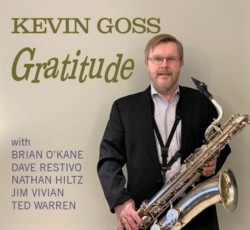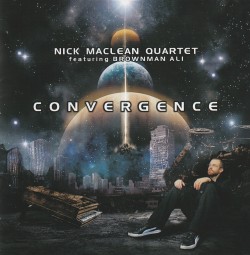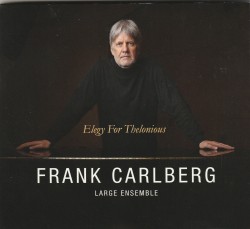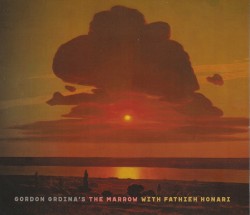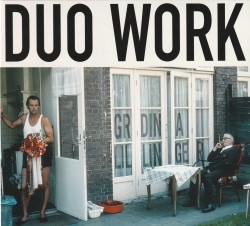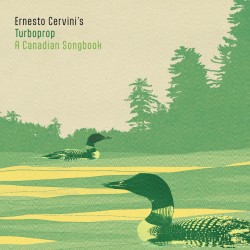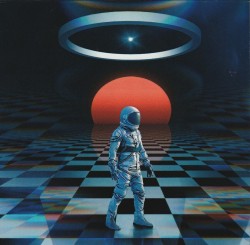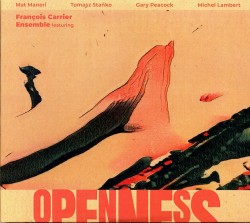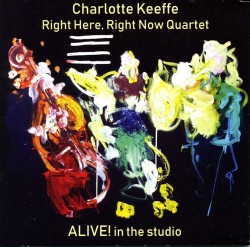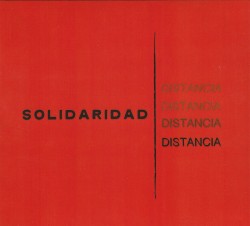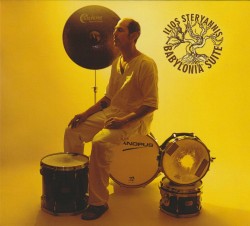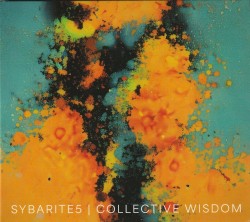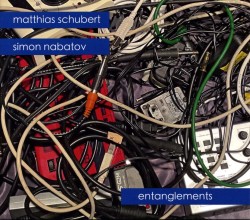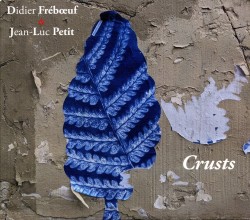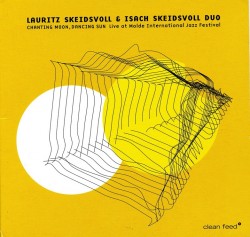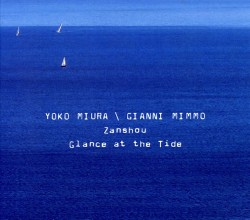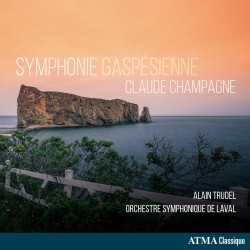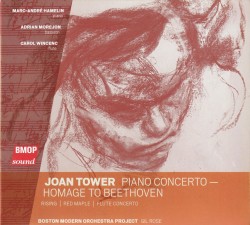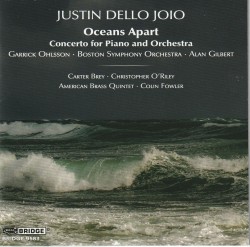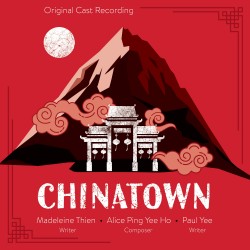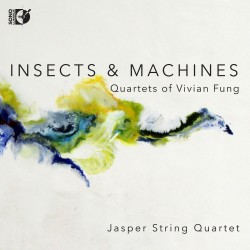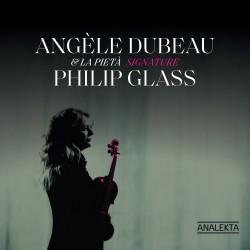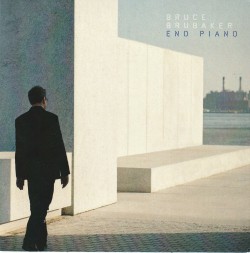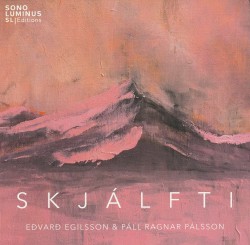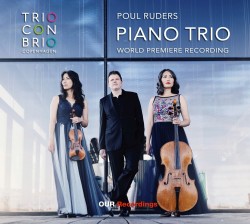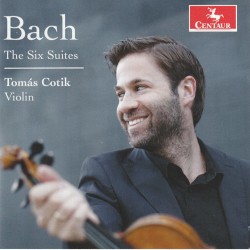 Violinist Tomás Cotik adds to his 2020 release of Bach’s Sonatas and Partitas and 2022 release of Telemann’s 12 Fantasias for Violin Solo with another outstanding solo disc on Bach The Six Suites, his own transcriptions for violin of the Six Cello Suites BWV1007-1012 (Centaur CRC4030/4031 tomascotik.com).
Violinist Tomás Cotik adds to his 2020 release of Bach’s Sonatas and Partitas and 2022 release of Telemann’s 12 Fantasias for Violin Solo with another outstanding solo disc on Bach The Six Suites, his own transcriptions for violin of the Six Cello Suites BWV1007-1012 (Centaur CRC4030/4031 tomascotik.com).
Cotik transposes the first five suites up a fifth to keep the relations between the violin strings (G-D-A-E) the same as on the cello (C-G-D-A); they are also an octave higher. Suite No.6 was written for a five-string instrument with an added high E string, so it is played here in the original key, with notes from the unavailable C string moved to a higher register. If there’s a downside, it’s the loss of the deep warmth of the cello’s lower register.
A Baroque bow is used, with resonant synthetic strings that are slightly softer than those Cotik regularly uses. Vibrato is employed effectively “as an ornament to the sound but not a continuous addition.” Cotik’s customary detailed and insightful booklet essay adds to a fascinating release.
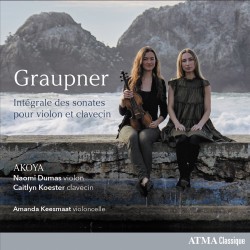 The Akoya duo of violinist Naomi Dumas and harpsichordist Caitlyn Koester makes its label debut with an album of sonatas by Christoph Graupner on Graupner Intégrale des sonates pour violon et clavecin, aided by Amanda Keesmaat on Baroque cello (ATMA Classique ACD2 4038 atmaclassique.com/en).
The Akoya duo of violinist Naomi Dumas and harpsichordist Caitlyn Koester makes its label debut with an album of sonatas by Christoph Graupner on Graupner Intégrale des sonates pour violon et clavecin, aided by Amanda Keesmaat on Baroque cello (ATMA Classique ACD2 4038 atmaclassique.com/en).
Dumas and Koester formed the duo when studying in the Historical Performance program at Juilliard and specialize in the interpretation of early repertoire. An exact contemporary of J. S. Bach, Graupner (1683-1760) was virtually forgotten after his death, but recent groundbreaking work on his autograph sources at the University of Darmstadt has led to a revival of interest.
This CD marks the world premiere recording of Graupner’s complete sonatas for violin and harpsichord GWV707-711; two are in G major and three in G minor. They are absolutely charming works, given beautifully articulated performances in a richly resonant recording.
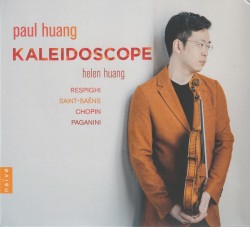 Every now and then a CD of such outstanding quality comes along that it leaves you struggling for words. Such is the case with Kaleidoscope, a CD featuring brilliant playing by violinist Paul Huang and pianist (and no relation) Helen Huang in works by Respighi, Saint-Saëns, Paganini and Chopin (naïve V 8088 paulhuangviolin.com/recordings).
Every now and then a CD of such outstanding quality comes along that it leaves you struggling for words. Such is the case with Kaleidoscope, a CD featuring brilliant playing by violinist Paul Huang and pianist (and no relation) Helen Huang in works by Respighi, Saint-Saëns, Paganini and Chopin (naïve V 8088 paulhuangviolin.com/recordings).
Paul Huang draws a sumptuous tone from the 1742 “Ex-Wieniawski” Guarneri del Gesù violin, but it’s the power and expressiveness of his playing that takes your breath away. Helen Huang’s piano work is no less fine.
The seldom-heard Respighi Sonata in B Minor p.110 is a real gem, with a gorgeous opening movement, and the Saint-Saëns Sonata No.1 in D Minor Op.75 is a dazzling work with a hair-raising Allegro molto fourth movement.
Paganini’s Cantabile in D Major Op.17 – which really does sing here – comes between the two sonatas, and Chopin’s Nocturne in E-flat Major Op.9 No.2, in the transcription by Sarasate ends one of the most captivating albums I’ve heard in a long time.
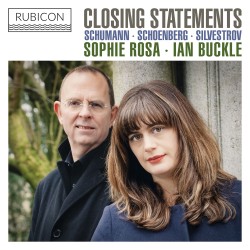 Closing Statements, the new CD from violinist Sophie Rosa and pianist Ian Buckle, is described as exploring the ways in which composers end their creative lives (Rubicon Classics RCD1119 rubiconclassics.com/artist/sophie-rosa-ian-buckle).
Closing Statements, the new CD from violinist Sophie Rosa and pianist Ian Buckle, is described as exploring the ways in which composers end their creative lives (Rubicon Classics RCD1119 rubiconclassics.com/artist/sophie-rosa-ian-buckle).
Schumann’s Violin Sonata No.3 WoO2 was created when he added two new movements to the Intermezzo and Finale that he had contributed to the F-A-E sonata with Brahms and Dietrich. Clara Schumann and Joseph Joachim played through it in February 1854, just days after Schumann’s attempted drowning in the Rhine, and decided to suppress it, the sonata not being published until the 1956 centenary of the composer’s death.
Two Phantasies, while differing greatly in sound, both look back to classical models: Schoenberg’s Phantasy Op.47 and Schumann’s Fantasie in C Op.131, written for Joachim in 1853.
Both draw particularly fine playing from the duo. The hauntingly beautiful 1991 “Post scriptum” Sonata by Ukrainian composer Valentyn Silvestrov (b.1937) rounds out an excellent disc.
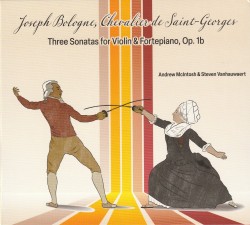 Joseph Bologne, Chevalier de Saint-Georges: Three Sonatas for Violin & Fortepiano, Op.1b, featuring violinist Andrew McIntosh and fortepianist Steven Vanhauwaert is another COVID lockdown product (Olde Focus Recordings FCR923 newfocusrecordings.com).
Joseph Bologne, Chevalier de Saint-Georges: Three Sonatas for Violin & Fortepiano, Op.1b, featuring violinist Andrew McIntosh and fortepianist Steven Vanhauwaert is another COVID lockdown product (Olde Focus Recordings FCR923 newfocusrecordings.com).
In 2020 McIntosh and Vanhauwaert read through the violin sonatas of Bologne to pick one to film and became so enamoured of them that they decided to record all three for an album. Published in 1781 at the height of Bologne’s career they are charming and not insubstantial works, full of late 18th-century elegance.
Each of the sonatas – No.1 in B-flat Major, No.2 in A Major and No.3 in G Minor – has two movements, with an opening Allegro and a gentler second movement. Dynamics and articulations in the printed edition are minimal and often inconsistent, with the duo here consequently employing ornamentation consistent with the style of the period in excellent performances.
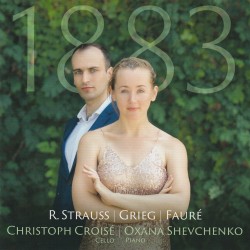 Cellist Christoph Croisé and pianist Oxana Shevchenko have been playing together since 2014, and on 1883 they celebrate a year marked by two major cello sonatas plus the publication of a significant single movement (Avie AV2632 avie-records.com).
Cellist Christoph Croisé and pianist Oxana Shevchenko have been playing together since 2014, and on 1883 they celebrate a year marked by two major cello sonatas plus the publication of a significant single movement (Avie AV2632 avie-records.com).
The first version of Richard Strauss’ Cello Sonata in F Major Op.6, TrV 115 dates from 1881, but Strauss – still only 19 years old – revised it in 1883 by replacing the original third movement with a completely new finale. It’s a work of youthful exuberance with a profound middle Andante.
A profound middle movement Andante is also a feature of Grieg’s Cello Sonata in A Minor Op.36, a mature work, the slow movement of which recycles material from an earlier funeral march. Fauré’s Élégie Op.24, possibly intended as the slow movement for a projected sonata, was written in 1880 and published in 1883; it mirrors the previous slow movements in mood.
Croisé plays with a full, warm tone, and Shevchenko’s playing is sensitive and unfailingly musical. The two say that they thought the three pieces would make a wonderful program. They were right.
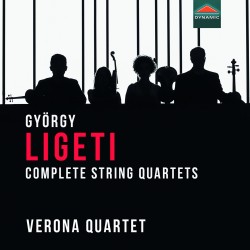 The Verona Quartet is in superb form on György Ligeti Complete String Quartets, an album celebrating the centenary of the Hungarian avant-garde composer (Dynamic CDS8010 veronaquartet.com/discography).
The Verona Quartet is in superb form on György Ligeti Complete String Quartets, an album celebrating the centenary of the Hungarian avant-garde composer (Dynamic CDS8010 veronaquartet.com/discography).
Ligeti’s String Quartet No.1 Métamorphoses nocturnes, a continuous single movement of 12 sections was written in 1953-54 during the era of Soviet censorship; it was not premiered until May 1958, after the composer had fled Hungary for Vienna. It’s a fascinating work in its range of sound and style, with Bartók’s influence clearly audible.
String Quartet No.2 was written in 1968 for the LaSalle Quartet, and unlike its predecessor, immediately became part of the string quartet repertoire. The five movements differ widely in pacing, with the fifth unexpectedly fully tonal and melodic.
Ligeti wrote nothing further for string quartet, although there were advanced plans for two additional quartets commissioned by the Arditti and Kronos ensembles. However, he did release Andante and Allegro from 1950, an attempt at accessible music within the Socialist Realism constraints; it ends a terrific CD.
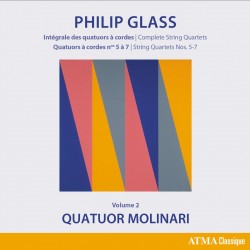 The ongoing Quatuor Molinari set of Philip Glass Complete String Quartets continues with Volume 2 String Quartets Nos. 5-7, a digital-only release. Volume 3 is planned for 2024, at which point a box set will be issued (ATMA Classique ACD2 4072 atmaclassique.com/en).
The ongoing Quatuor Molinari set of Philip Glass Complete String Quartets continues with Volume 2 String Quartets Nos. 5-7, a digital-only release. Volume 3 is planned for 2024, at which point a box set will be issued (ATMA Classique ACD2 4072 atmaclassique.com/en).
The works mark a move away from Glass’searly repetitive patterns to a broader post-minimalist approach, although minimalist influences are never far away. String Quartet No.5 exhibits a more sophisticated musical development, and String Quartet No.6 reflects the composer’s pursuit of a more classical approach. String Quartet No.7, an extensive single movement, was initially presented as a choreographed dance piece. All three quartets were premiered by the Kronos Quartet, in 1992, 2013 and 2014 respectively.
Performances and recording quality are top-notch throughout.
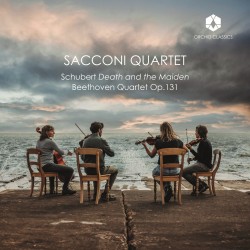 The Sacconi Quartet, Britain’s longest-established string quartet celebrates 21 years with the original membership on an outstanding CD of quartets by Schubert and Beethoven (Orchid Classics ORC100265 sacconi.com/recordings).
The Sacconi Quartet, Britain’s longest-established string quartet celebrates 21 years with the original membership on an outstanding CD of quartets by Schubert and Beethoven (Orchid Classics ORC100265 sacconi.com/recordings).
Schubert’s String Quartet No.14 in D Minor D810, “Death and the Maiden”
from 1824, when the composer was facing his own mortality, is paired with Beethoven’s String Quartet No.14 in C-sharp Minor Op.131 from 1826, the year before his death. The Op.131 was the last music Schubert heard, days before he died – in 1828.
The quartet members say that they “wanted to make an album of some of the music that means the very most to us, and these two quartets were obvious choices. We have literally lived with them for most of our career.” The Beethoven in particular has been performed from memory in various artistic and theatrical settings, including their “Beethoven in the Dark” immersive performance.
Their familiarity with the works is obvious in quite striking performances, the resonant recording capturing the emotional depth and sensitivity of the playing.
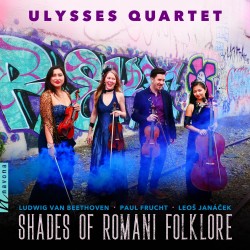 The premise behind Shades of Romani Folklore – works connected by a Romani influence – seems a bit tenuous at first glance, but spirited performances by the Ulysses Quartet certainly justify it (Navona NV6567 navonarecords.com/catalog/nv6567).
The premise behind Shades of Romani Folklore – works connected by a Romani influence – seems a bit tenuous at first glance, but spirited performances by the Ulysses Quartet certainly justify it (Navona NV6567 navonarecords.com/catalog/nv6567).
The finale of Beethoven’s String Quartet No.4 in C Minor, Op.18 No.4 is described as “rip-roaring,” with a distinct Romani flavour to its rondo theme. The link continues with the world-premiere recording of Paul Frucht’s Rhapsody, a work inspired by the Tzigane Ravel wrote for the Hungarian violinist Jelly d’Arányi that evoked the Romani style.
The most powerful work here is Janáček’s String Quartet No.2, “Intimate Letters”, reflecting his passionate but unrequited feelings for the much younger Kamila Stösslová. In one of his over 700 letters to her, revealed that in his song cycle Diary of One Who Disappeared he had cast her as Zefka, the Roma girl whose forbidden love affair with a young Czech man is the basis of the work. The obsessive passion and raw emotion are beautifully captured by the performers.
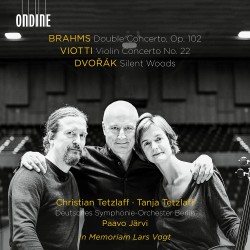 When violinist Christian Tetzlaff and his sister, cellist Tanja Tetzlaff, decided to record an album in memory of their long-time artistic partner pianist Lars Vogt, who died in September 2022 one particular work was “immediately the right piece” for all concerned: the Double Concerto in A Minor Op.102 by Brahms, one of Vogt’s favourite composers. A superb performance is at the heart of the resulting CD Brahms | Viotti with the Deutsche-Symphonie-Orchester Berlin conducted by Paavo Järvi (Ondine ODE 1423-2 naxos.com/CatalogueDetail/?id=ODE1423-2).
When violinist Christian Tetzlaff and his sister, cellist Tanja Tetzlaff, decided to record an album in memory of their long-time artistic partner pianist Lars Vogt, who died in September 2022 one particular work was “immediately the right piece” for all concerned: the Double Concerto in A Minor Op.102 by Brahms, one of Vogt’s favourite composers. A superb performance is at the heart of the resulting CD Brahms | Viotti with the Deutsche-Symphonie-Orchester Berlin conducted by Paavo Järvi (Ondine ODE 1423-2 naxos.com/CatalogueDetail/?id=ODE1423-2).
All concerned found the experience incredibly moving, with Vogt foremost in their minds throughout the recording, and the emotional intensity together with the superb playing makes this a performance for the ages. Brahms wrote the concerto to mend his broken friendship with Joseph Joachim, and the Tetzlaffs’ profound understanding of how the individual movements may relate to what Brahms was trying to say and achieve clearly adds depth to their interpretation.
In the concerto Brahms quotes from Viotti’s Violin Concerto No.22 in A Minor, a work with early significance in Brahms’ and Joachim’s friendship, and it’s the other major work on the disc. A lovely performance of Dvořák’s Silent Woods Op.68 No.5 for cello and orchestra completes an outstanding CD.
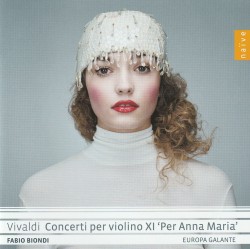 The Vivaldi Edition, the ambitious project to record all of the music in Vivaldi’s personal collection of autograph manuscripts now in the Italian National Library in Turin reaches volume 71 and volume 11 of the violin series with Vivaldi Concerti per violino XI ‘Per Anna Maria’ with soloist Fabio Bondi leading Europa Galante (naïve OP 7368 vivaldiedition.net).
The Vivaldi Edition, the ambitious project to record all of the music in Vivaldi’s personal collection of autograph manuscripts now in the Italian National Library in Turin reaches volume 71 and volume 11 of the violin series with Vivaldi Concerti per violino XI ‘Per Anna Maria’ with soloist Fabio Bondi leading Europa Galante (naïve OP 7368 vivaldiedition.net).
Anna Maria (1696-1782) was the most famous instrumentalist at the Ospedale della Pietà in Venice during Vivaldi’s time there; her own personal repertory manuscript volume contains the solo violin line for 24 Vivaldi concertos, including five otherwise unknown, with alternative reliable sources needed for the complete parts. Of the six concertos here three – in D Major RV207, D Major R229 and E-flat Major RV261 – are preserved in Turin, and two – in E-flat Major RV260 and B-flat Major RV363 “Il corneto da posta” – in Dresden. The Concerto in C Major RV179a is reconstructed from Anna Maria’s volume.
Performances are beautifully judged throughout the disc.
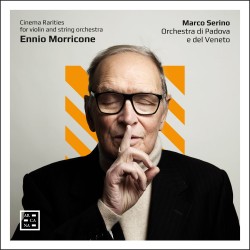 The idea for the CD Ennio Morricone: Cinema Rarities for violin and string orchestra with Marco Serino as soloist and leader of the Orchestra di Padova e del Veneto came about during the recording of its predecessor Cinema Suites, when the Morricone family sent Serino, the composer’s chosen violinist several rarities they hoped could also be recorded. These works, along with others that Serino rediscovered in his own archives make up the program here (Arcana A554 outhere-music.com/en).
The idea for the CD Ennio Morricone: Cinema Rarities for violin and string orchestra with Marco Serino as soloist and leader of the Orchestra di Padova e del Veneto came about during the recording of its predecessor Cinema Suites, when the Morricone family sent Serino, the composer’s chosen violinist several rarities they hoped could also be recorded. These works, along with others that Serino rediscovered in his own archives make up the program here (Arcana A554 outhere-music.com/en).
Space restrictions preclude my listing full details of the directors, film titles and years and individual track titles, but the music ranges from Sergio Leone’s 1968 Once Upon a Time in the West to Silvano Agosti’s 2001 The Sleeping Wife. There are three suites named for directors – Agosti, Mauro Bolognini and the Taviani Brothers – plus Four Adagios, chosen by the composer and dedicated to Serino. Arrangements are by Morricone (the majority) or Serino.
The overall mood changes little, but it’s enchanting music, quite beautifully played.
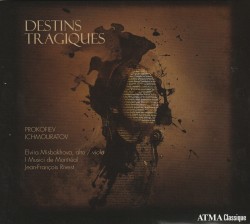 Elvira Misbakhova is the principal viola with the Orchestre Métropolitain in Montreal and a member of I Musici de Montréal. It’s this latter group under Jean-François Rivest that accompanies her on Destins Tragiques, a CD featuring new versions of music from the 1930s by Prokofiev and Shostakovich (ATMA Classique ACD2 2862 atmaclassique.com/en).
Elvira Misbakhova is the principal viola with the Orchestre Métropolitain in Montreal and a member of I Musici de Montréal. It’s this latter group under Jean-François Rivest that accompanies her on Destins Tragiques, a CD featuring new versions of music from the 1930s by Prokofiev and Shostakovich (ATMA Classique ACD2 2862 atmaclassique.com/en).
With the composer’s permission, the violist Vadim Borisovsky made 13 arrangements for viola and piano from scenes in Prokofiev’s ballet Romeo and Juliet Op.64. The Montreal violist and arranger François Vallières has taken seven of these arrangements and composed a new orchestration for strings from the piano part. It’s nicely done but lacks the bite of the original Prokofiev. The viola is not always prominent – by design – and even in the several virtuosic passages tends to be absorbed into the string sound.
Much more effective is the 2006 Fantasy for Viola and Orchestra on Themes from the Opera “Lady Macbeth of Mtsensk” by Shostakovich, Op.12 by the Montreal composer Airat Ichmouratov, heard here in Ichmouratov’s own reduction for string orchestra.
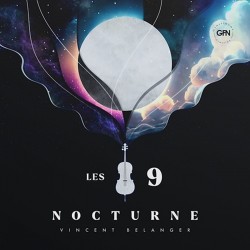 Les 9 de Montréal is an ensemble of eight cellos and a double bass founded by cellist and artistic director Vincent Bélanger; their third album, Nocturne is a new digital release (GFN Productions www.les9.ca).
Les 9 de Montréal is an ensemble of eight cellos and a double bass founded by cellist and artistic director Vincent Bélanger; their third album, Nocturne is a new digital release (GFN Productions www.les9.ca).
The program is mostly arrangements of classical favourites, with Saint-Saëns’ The Swan, Beethoven’s Moonlight Sonata theme, Ravel’s Pavane pour une infante défunte, Debussy’s Clair de lune (particularly effective), Fauré’s Après un rêve, Rameau’s Hymne à la nuit and a Chopin Nocturne. Soprano Lyne Fortin joins the group for Rachmaninoff’s Vocalise and La veuve et la lune, a work by Montréal composer Christian Thomas.
As the title suggests, there’s not a great deal of mood change, just a constant flow of mellow cello ensemble playing, nicely arranged, sensitively played and beautifully recorded. All in all, an excellent and appropriate choice for late-night listening.
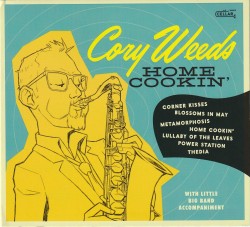 Home Cookin’
Home Cookin’

